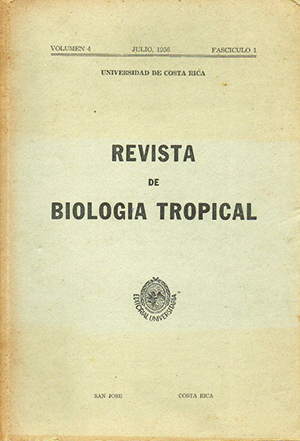Abstract
A chronological review of the existing literature on Endotrypanum schaudinni MESNIL and BRIMONT 1908 is made. An arrangement of the existing knowledge on these interesting trypanosomes is attempted and further facts are contributed. The taxonomic position and characteristics of their vertebrate hosts, Bradypus and Choloepus, is given as well as some observations on the biology and geographical distribution on the specimens captured in this country. The morphology of the parasite has been observed both in fresh as well as in stained preparations, and trypanosome forms have been reported in Choloepus hoffmanni for the first time. Intracellular forms are reported only in those slides which were prepared immediately after obtaining the blood. The technique and the different culture media employed in the primary isolation of the hemoparasite are given. The harmful effects of anti-clotting agents in the culture media is noticed. A study of the culture forms is carried out both on fresh as well as on stained preparatíons, reporting in our strains only the leshmania and leptomona forms. A comment is made in relation to the trypanosome forms that had been reported by CUNHA and MUNIZ (4). Different laboratory animals were inoculated with blood of infected Choloepus and with culture forms without being able to demonstrate infection in any of them, probably due to their great specificity toward edentates inferred easily from their strict intracellular parasitism. In addition, comments are made on the importance of the physiological state of the animals to be inoculated. An adult Choloepus and a human being were inoculated with fresh culture forms but negative results were obtained. This might be due to a 1055 of virulence of the "in vitro" strain or to a state of premunition of the adult specimen to a protozoosis. Recently isolated culture forms were inoculated into the vitellin sac of the chick embryo with negative results. With respect to its evolutive cycle, the parasite does not present division forms in the peripheral blood stream nor were its tissular forms found in the histological examination. The finding of parasite nests in a breast of Bradypus griseus griseus does not make its evolution in the vertebrate host any clearer to us due to the fact that the sloth was parasitized with another trypanosome and that the presence of a kinetoplast could not be demonstrated in these forms, all of which suggests the possibility of a toxoplasmosis. In exalated blood kept at room temperature the parasites leave the erythrocytes and show a better locomotive apparatus. This we relate to its evolutive cycle since this phenomenon probaly takes place in the intestinal tract of some intermediary arthropod host. Several ectoparasites were collected from Choloepus, among them a tick of the genus Amblyomma. In Bradypus, several arthropods that live in intimate relationship with this vertebrate are reported, such as Cryploses choloepi, among them a tick of the genus Amblyomma. In Bradypus, several arthropods that live in intimate relationship with this vertebrate are reported, such as Cryptoses choloepi, Trichillum bradyporum, and a coleopterus of the family Scarabeidae. In addition, Amblyomma gertschi was found and was carefully studied since it was the only hematophagous ectoparasite. An unsuccesful effort is made at finding a hemipterus, Belminus costarincensis, that had been reported in a sloth. Although the search for the vector of this parasitosis was fruitless, we are convinced of its existence and will continue searching for it. We carried out a xenodiagnosis on Choloepus, with Triatoma infestans and Triatoma dimidiata, without being able to obtain the evolution of the parasite. The main characteristics of the genus Endotrypanum are given but it cannot be definitely placed in the family Trypanosomidae since its evolutive cycle is not known.##plugins.facebook.comentarios##
Downloads
Download data is not yet available.






